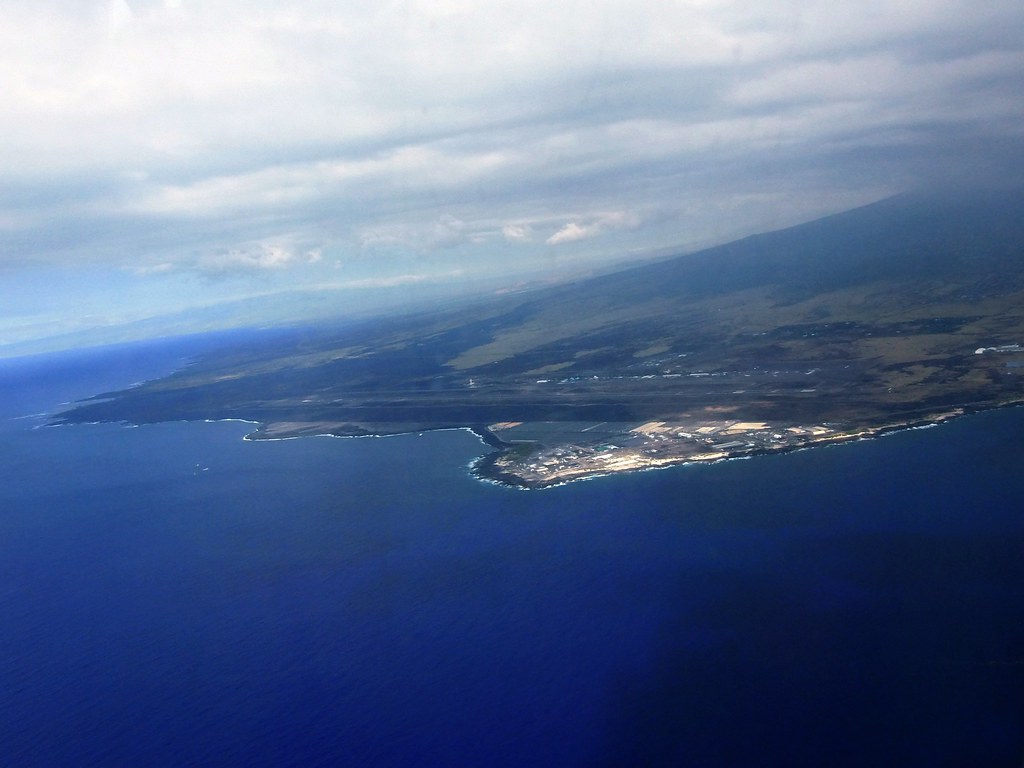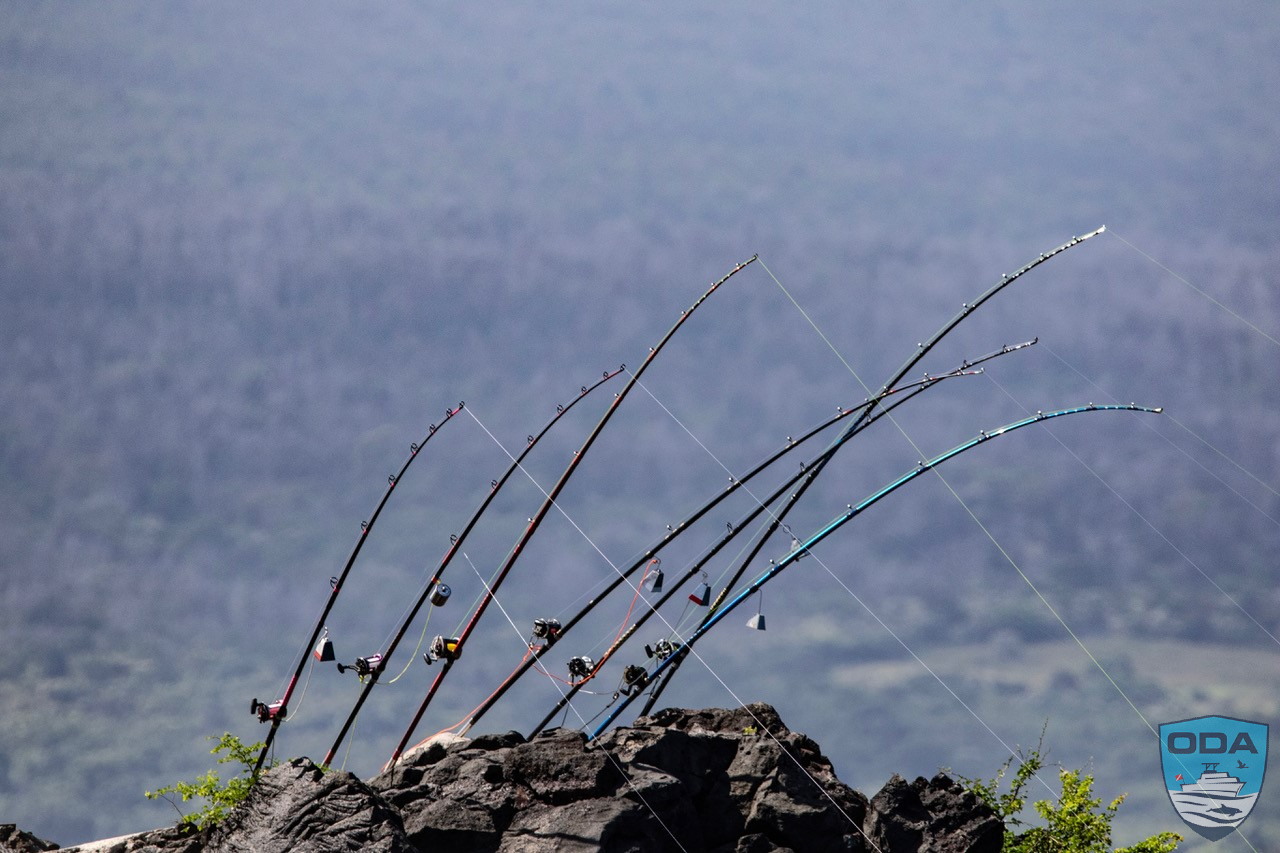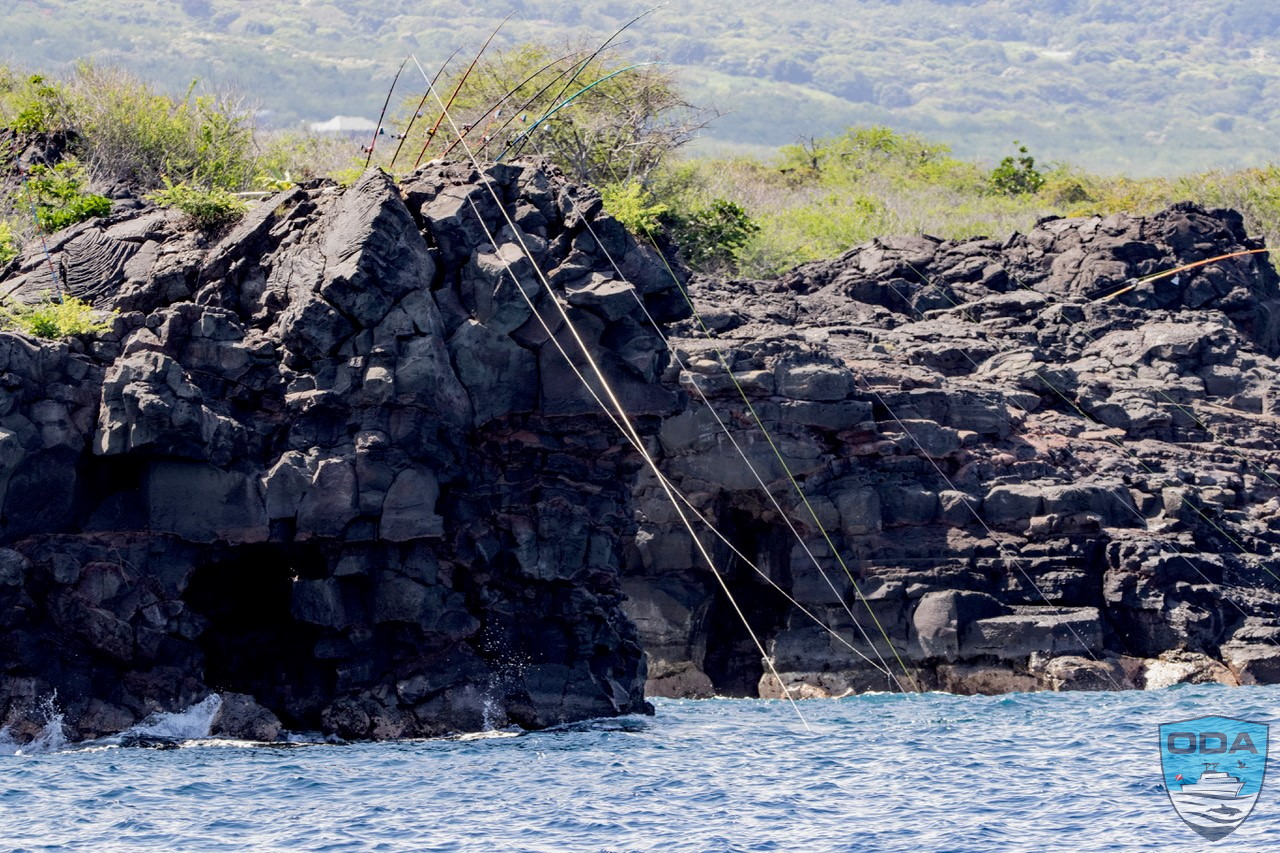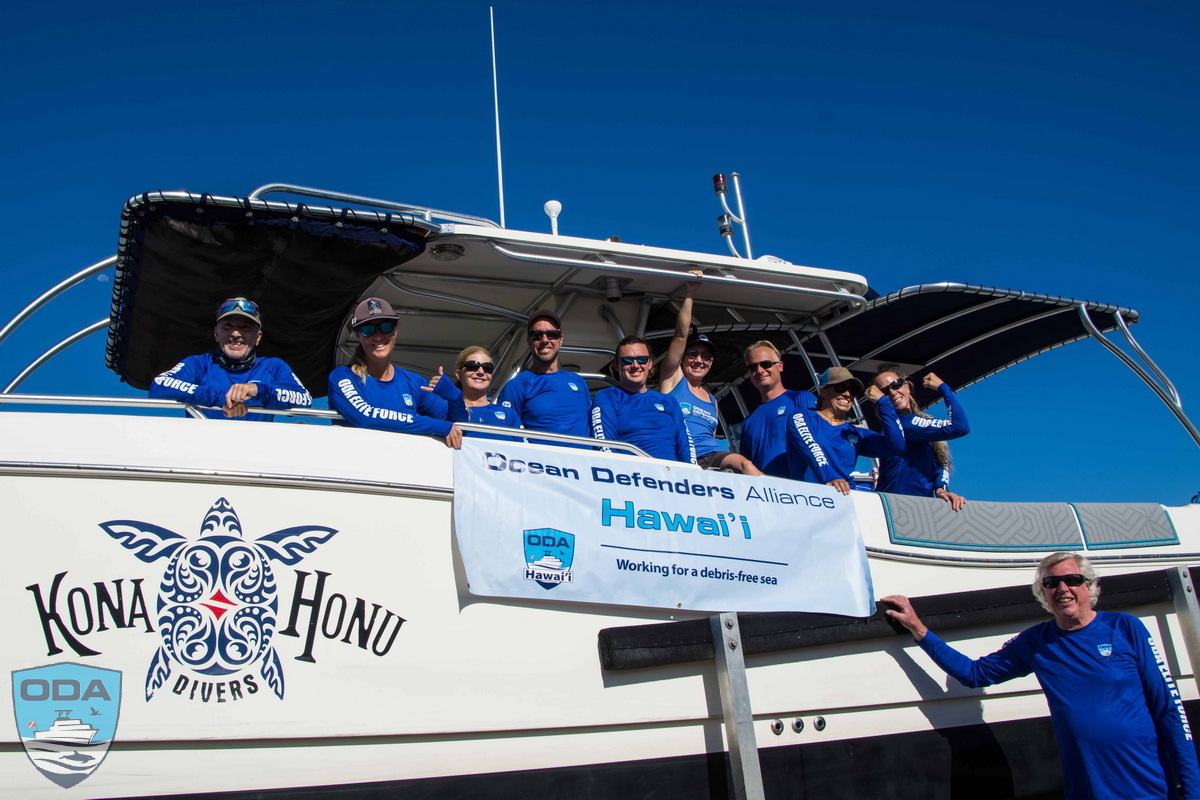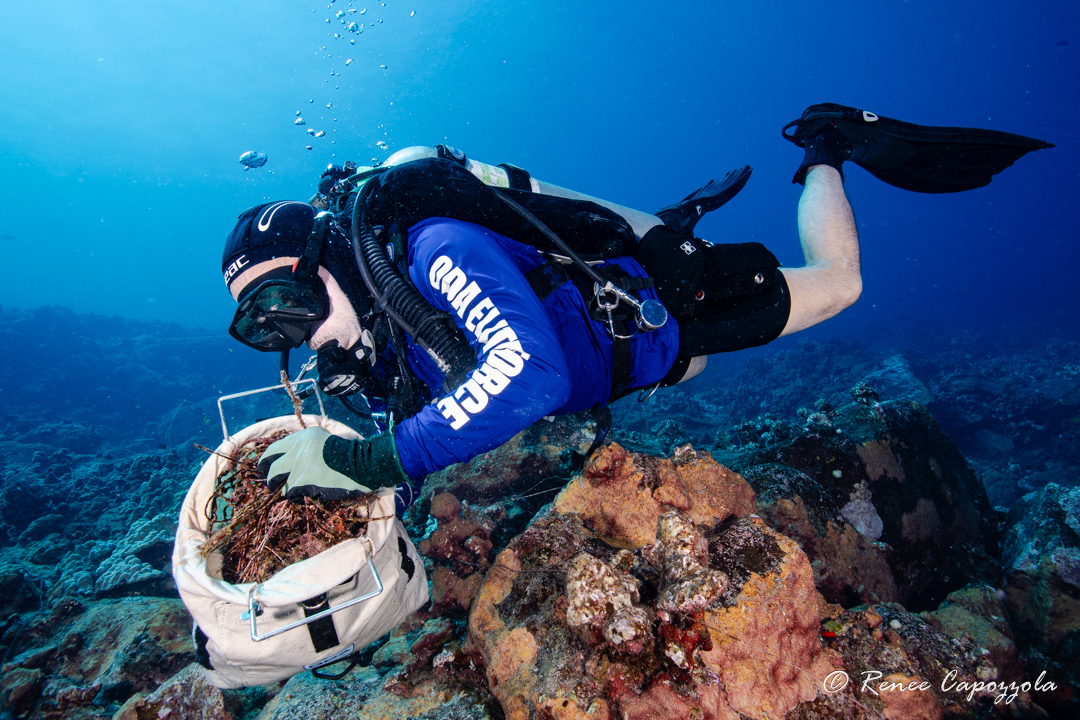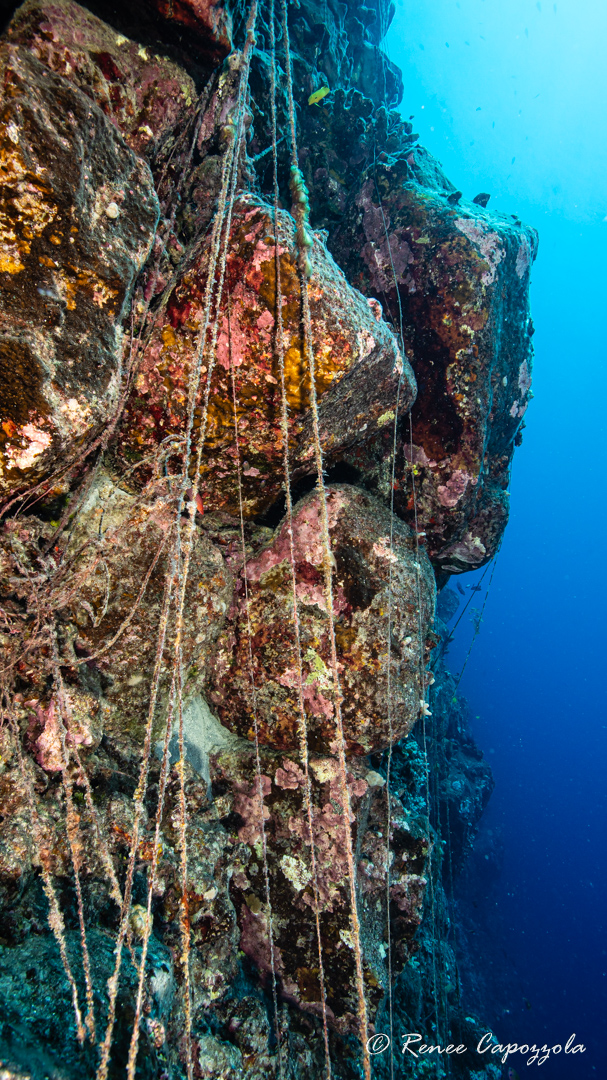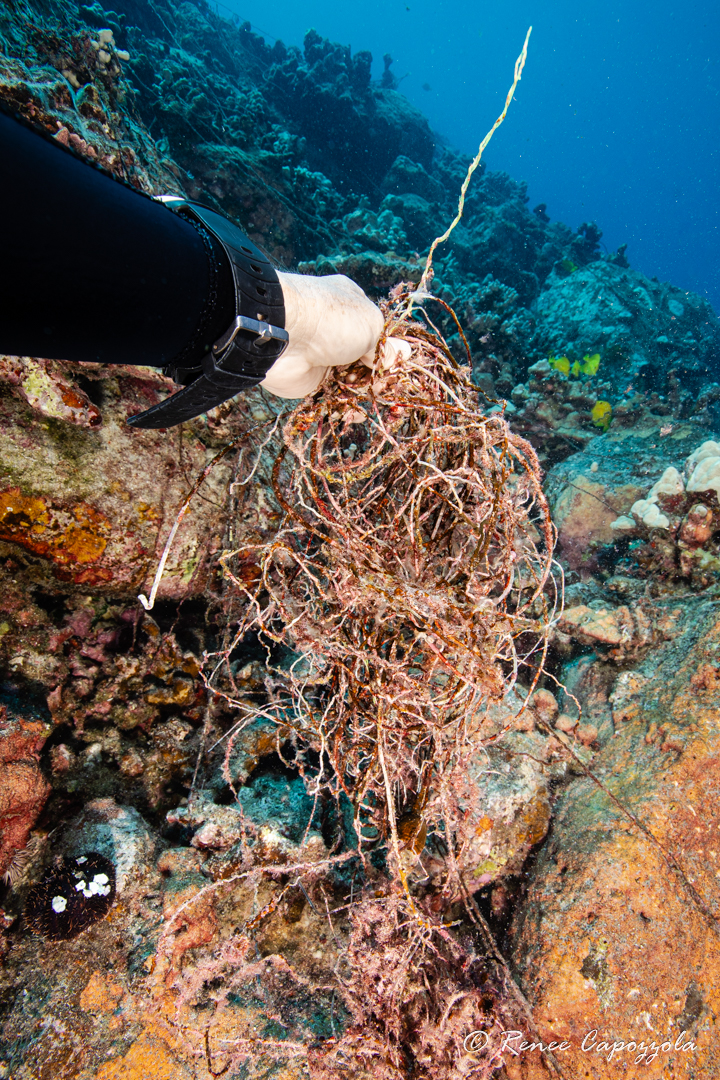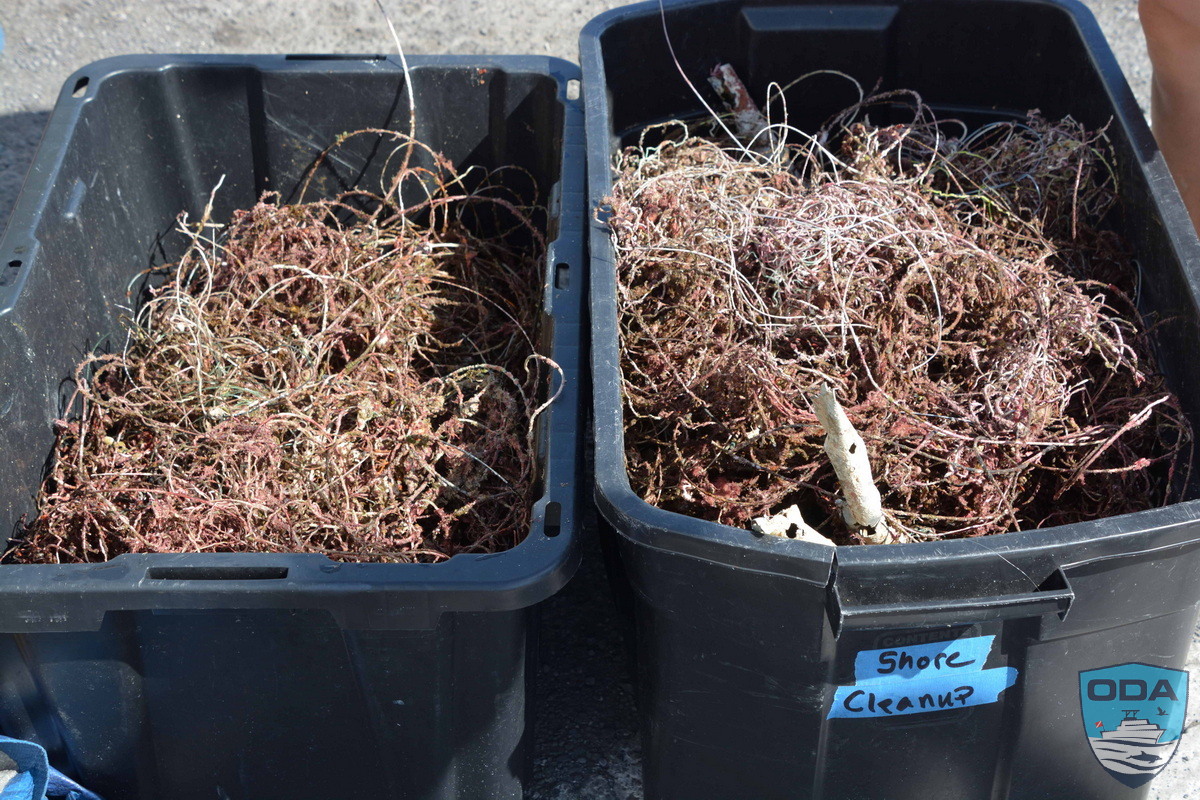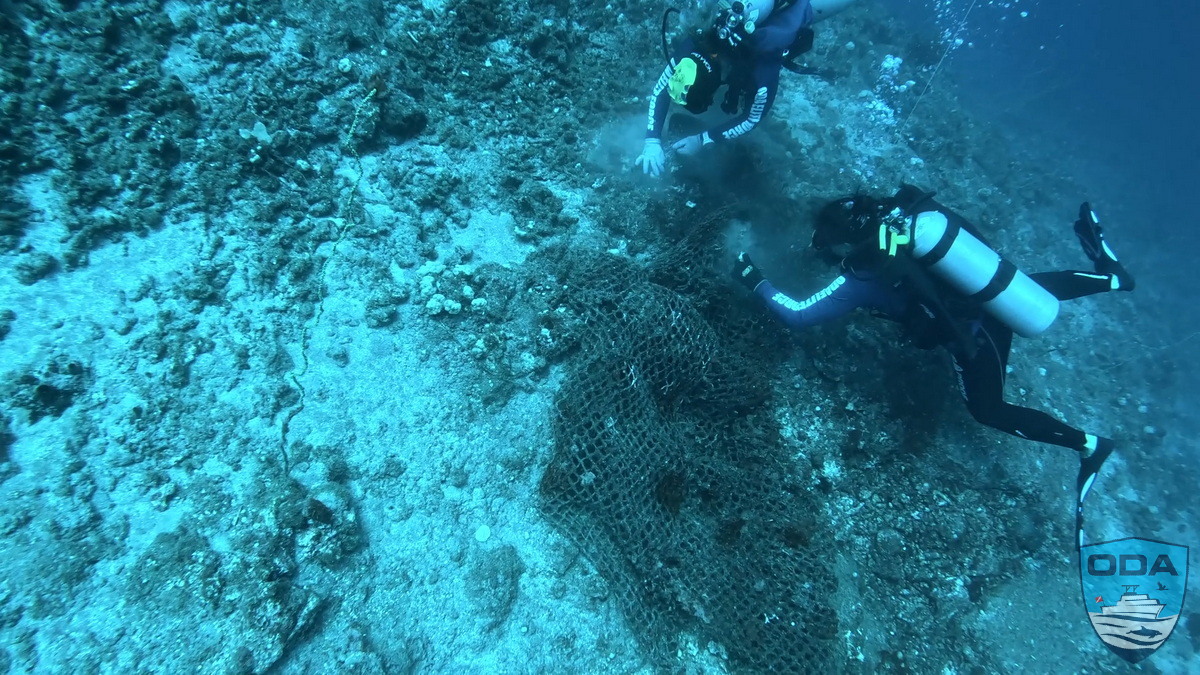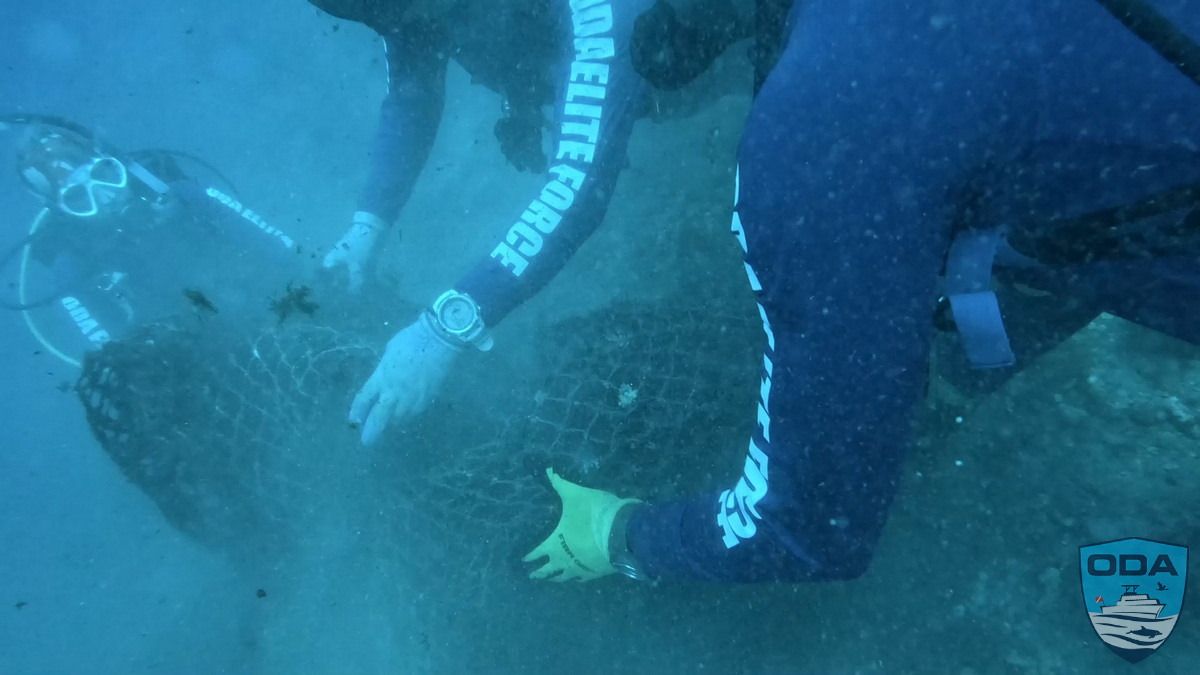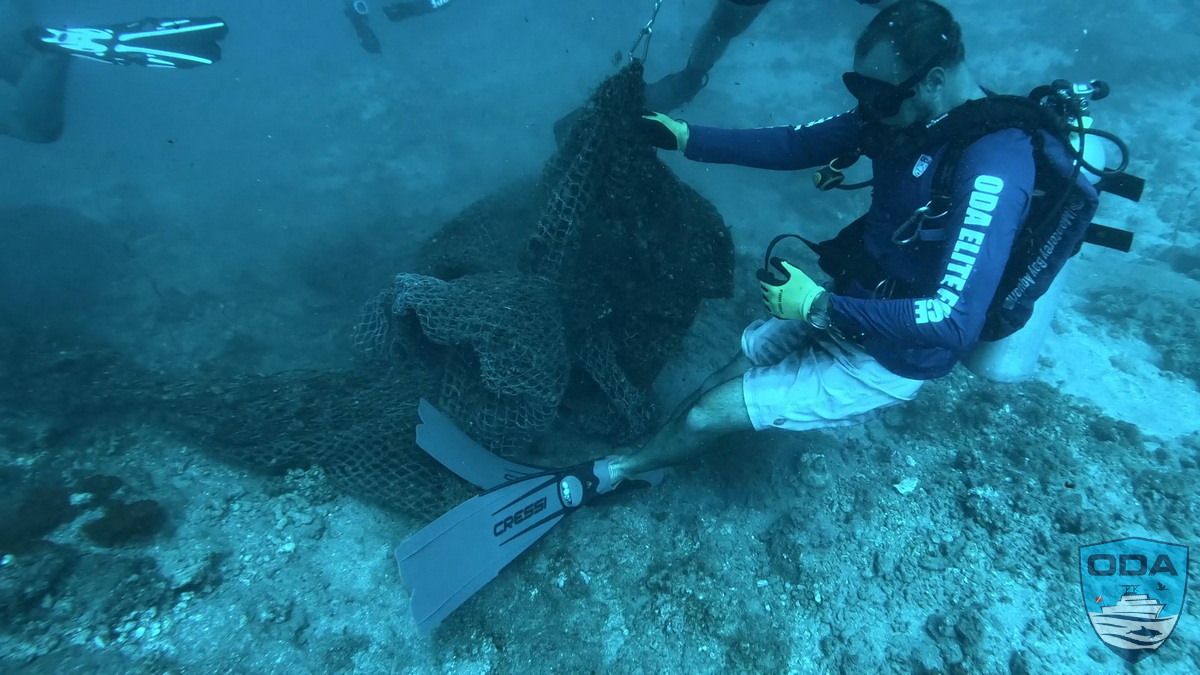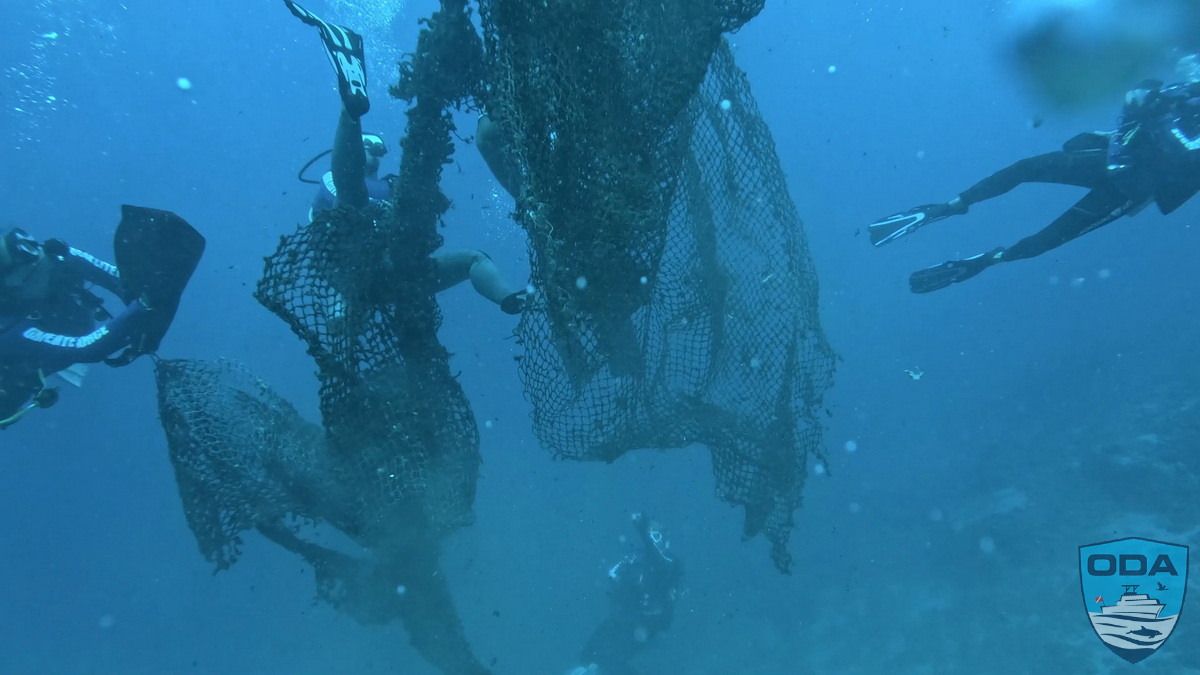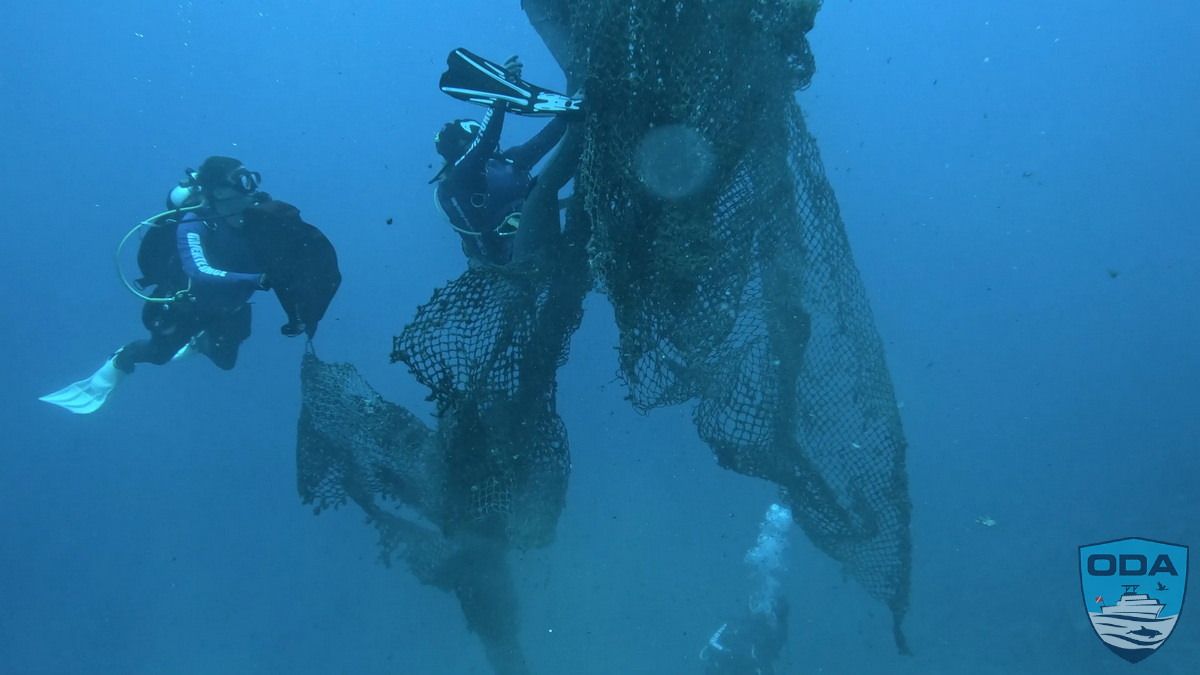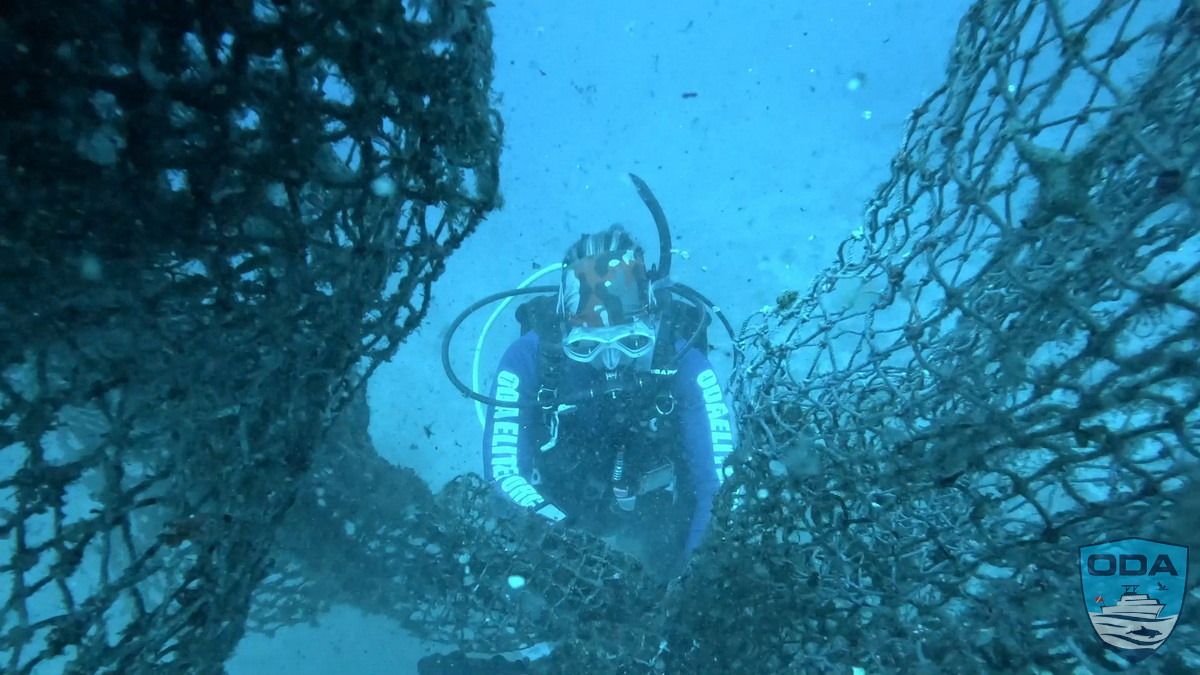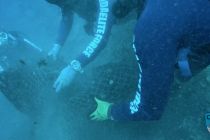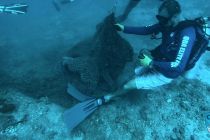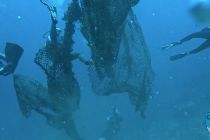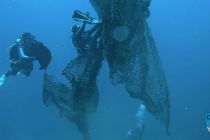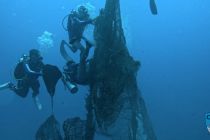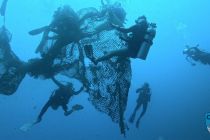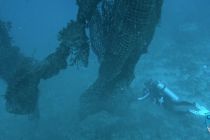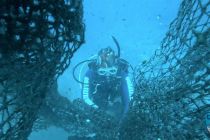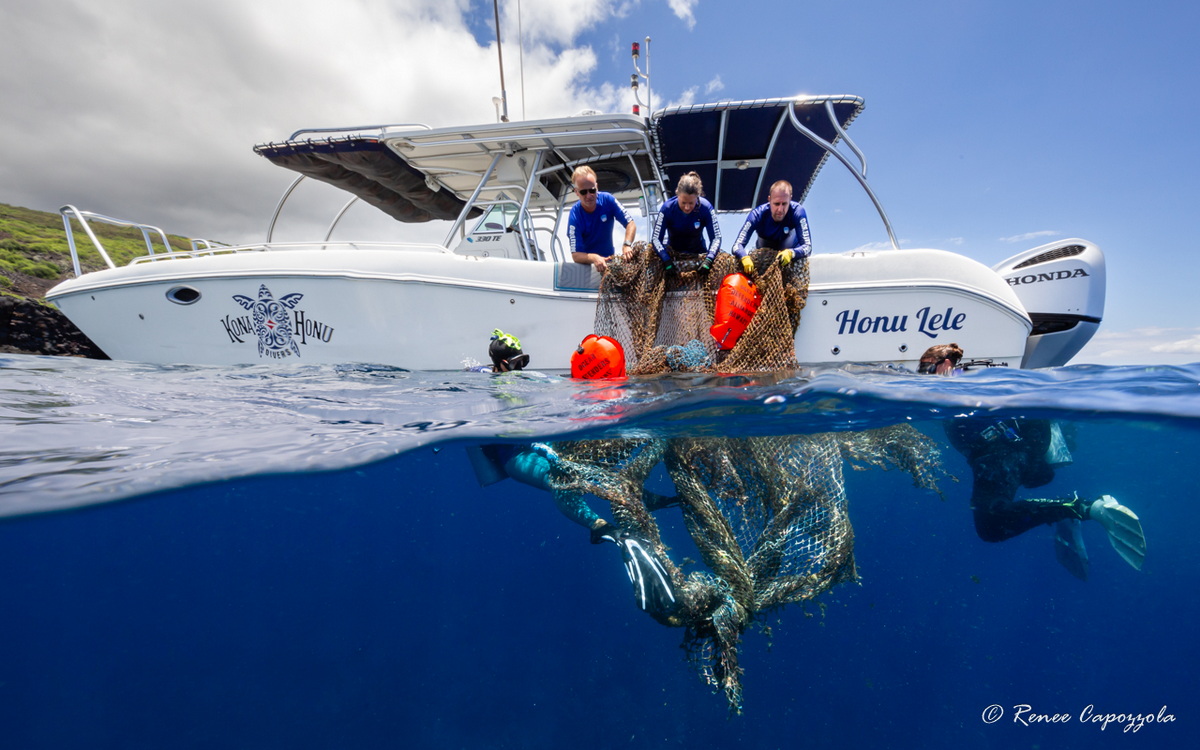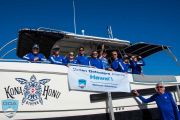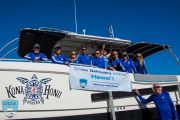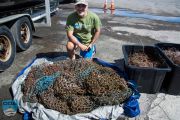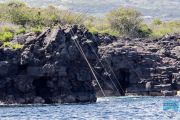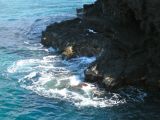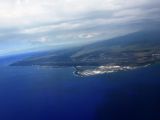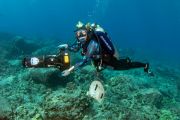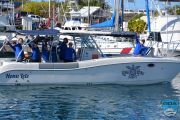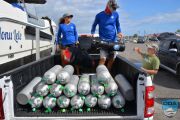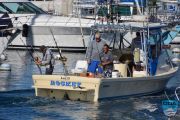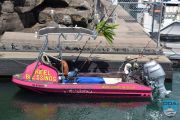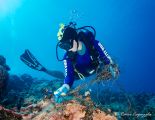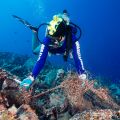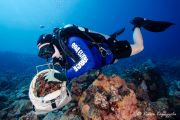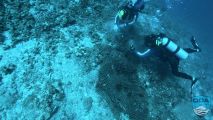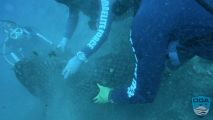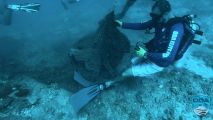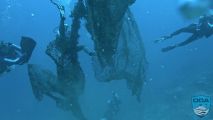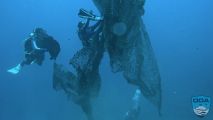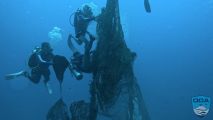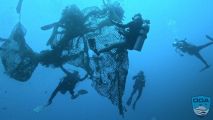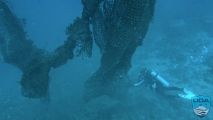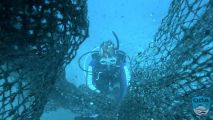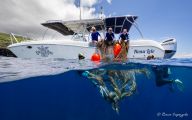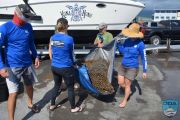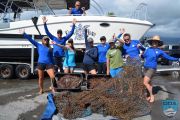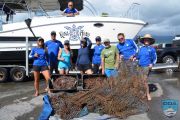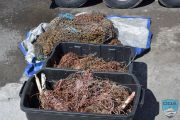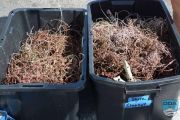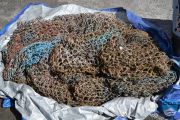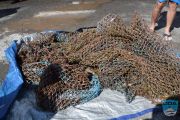By ODA Hawai’i Island Chapter Leader Sarah Milisen
UPDATE: Amazing video from this day:
It's no secret that the western coast of Hawai'i Island boasts deep, pelagic ocean depths extremely close to shore. Shore divers can conduct technical-depth dives from the beach, and fishermen can catch pelagic fish species from the rocks off the Kona Coast.
Points that jut out on an island usually offer steep slopes, but Hawai'i Island offers drastic depth on these points – South Point, Keahole point (ODA has adopted four dive sites along that point), and other points like Kaiwi Point to the south of Honokohau Harbor. Divers, swimmers, and fishermen can see whales on the reef, pelagic sharks, mahi mahi; even marlin and sailfish are accessible from shore via these deep drop-offs. Occasionally, advanced dive trips offer exploratory drift diving in new, potentially un-dived locations, and this is how I found Deep Step Surprise.
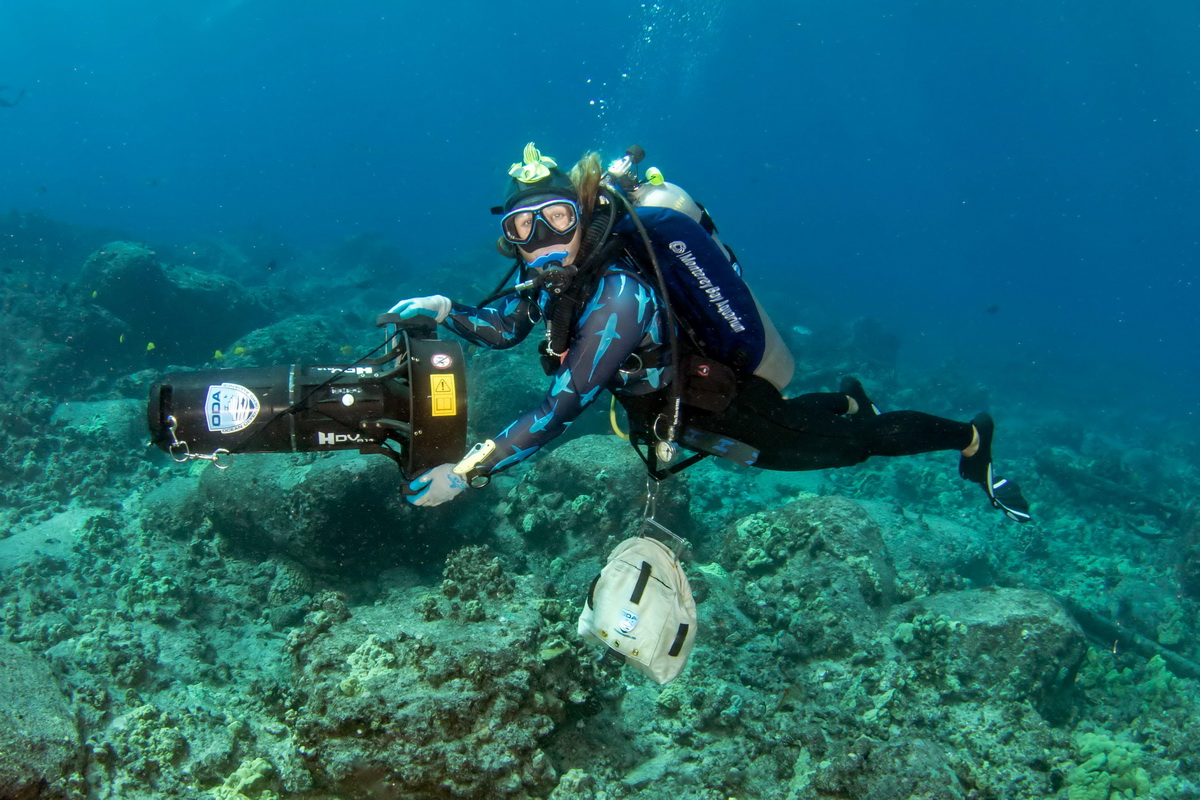 Sarah Milisen on ODA u/w scooterA couple months ago, I was guiding an Advanced Long-Range trip aboard a local dive boat leaving Honokohau with some very experienced divers who’ve been to all the Kona dive sites up and down the coast. Wanting to offer something new, I took a look at the bathymetry (depth) maps on our GPS, and chose a spot with a good drop-off, close to shore, that might offer pelagic critters and some nice walls. Divers chose to name the dive site "Deep Step Surprise" because its deep drop-off, just north of Two Step, and every corner we went around along the wall had another surprise encounter for us: great barracuda, green sea turtles, pipefish in pukas, and kanpachi (amberjack) cruising by. It was a beautiful dive, but sadly, there was a narrow strip of reef in utter, blanketed devastation. Cobwebs of fishing line, over decades of fishing, created this "waterfall" of fishing line down the reef into oblivion. It was as if a weaved carpet of line, some freshly discarded, some covered in algae, created this unnatural slide over the reef structure into the depths. I had no idea this area could have been so heavily fished.
Sarah Milisen on ODA u/w scooterA couple months ago, I was guiding an Advanced Long-Range trip aboard a local dive boat leaving Honokohau with some very experienced divers who’ve been to all the Kona dive sites up and down the coast. Wanting to offer something new, I took a look at the bathymetry (depth) maps on our GPS, and chose a spot with a good drop-off, close to shore, that might offer pelagic critters and some nice walls. Divers chose to name the dive site "Deep Step Surprise" because its deep drop-off, just north of Two Step, and every corner we went around along the wall had another surprise encounter for us: great barracuda, green sea turtles, pipefish in pukas, and kanpachi (amberjack) cruising by. It was a beautiful dive, but sadly, there was a narrow strip of reef in utter, blanketed devastation. Cobwebs of fishing line, over decades of fishing, created this "waterfall" of fishing line down the reef into oblivion. It was as if a weaved carpet of line, some freshly discarded, some covered in algae, created this unnatural slide over the reef structure into the depths. I had no idea this area could have been so heavily fished.
I came up from our dive and tried to hide my disappointment in seeing such fishing pressure on this habitat. I vowed internally to come back again and organize cleanup measures here. It ate at my soul to think about this portion of the reef.
Attempted Return to Deep Step
It had been a few years since I was able to return – but thanks to great friends with reliable boats, we got to send some divers down there for a quick recon mission and assessment. About an hour from Honokohau Harbor by boat, we cruised down there on a Saturday this past July. We got closer to the point, and we started to make out some tents and a truck or two on shore, right where we thought the dive site might be. This might not work, I thought, but needed to make sure. We got nearer, and then we could see at least 10 fishing poles and lines in the water, all off this very narrow ledge, so we knew we couldn't dive with active fishing going on.
Here are a few photographs of the lines in the water, and poles on the cliffs.
ODA will have to come back. This won't be a one-time thing... we are determined to clean this devastation up.
Taking Action
Deep Step Surprise has been on ODA-Hawai’i-Island’s “hit list” for a while now, and after the failed attempt in July to assess the existing destruction and necessary cleanup efforts I really wanted to get us back there.
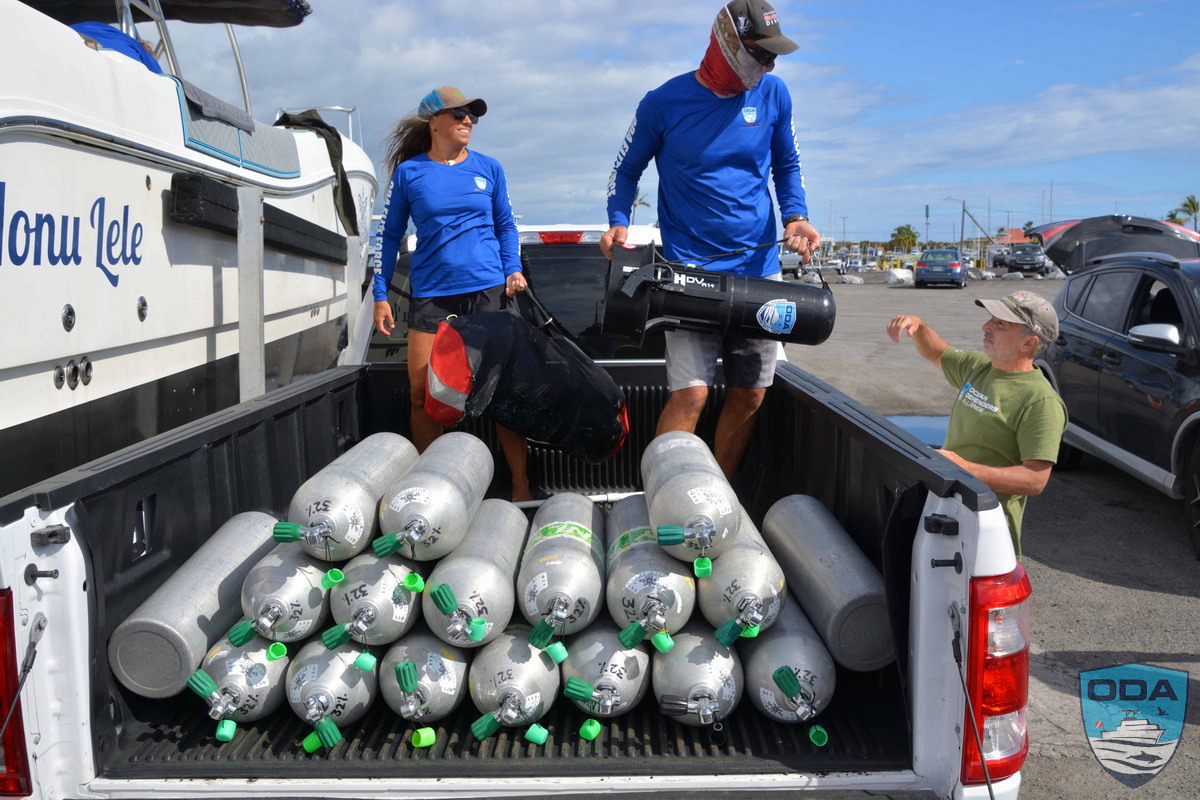
In early August, we commissioned our partner Kona Honu Divers’ boat and staff for our secret ODA mission “Deep Step.”
I was nervous we would have another disappointing encounter with shore fishermen and be unable to access the site, but we happened to charter Kona Honu’s boat on an offshore fishing tournament weekend – which can mean fewer active fishermen on the shore – and when we got down to our targeted dive site, it was miraculously vacant of any fishing poles.
Divers for this day’s events were: Professional Photographer Renee Capozzola, Juan Chacin, Erin Clement, Kay Cooper, Jacques Delorme, Jeff Milisen, Pippa Swannell, and me (Sarah Milisen). Andy Feifarek was our boat captain.
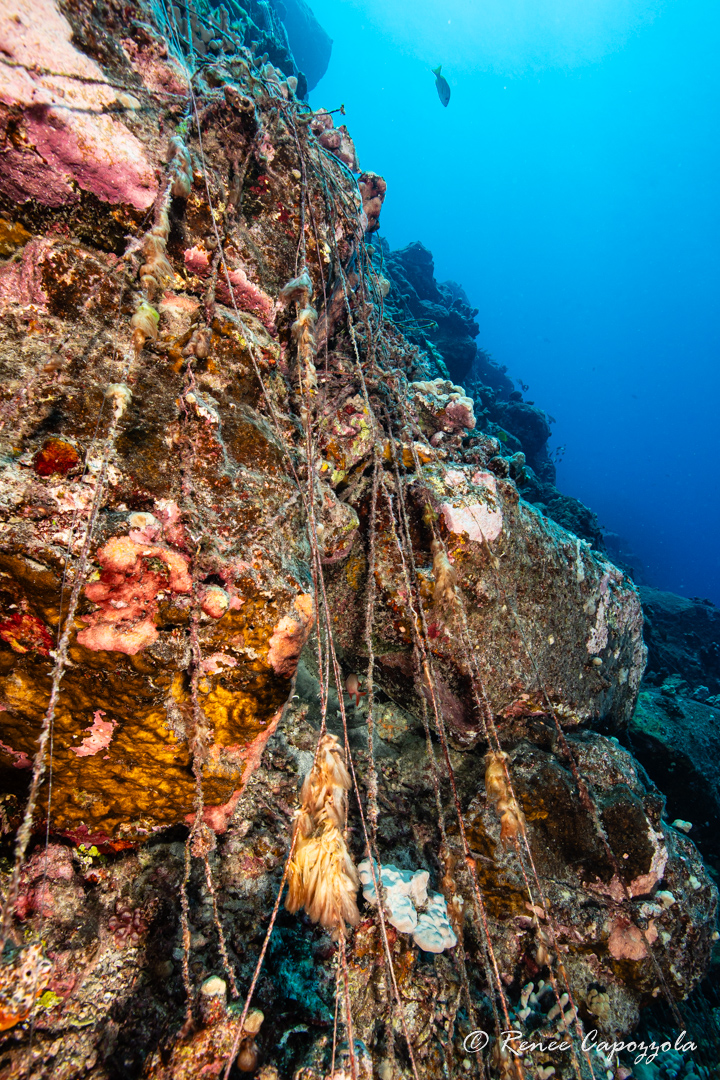 The crew were all ecstatic at our chance to check out what they’ve been hearing about for a while now. Jacques and I entered the waters and grabbed onto a couple DPVs (Diver Propulsion Vehicles) to scout a wide area to be able to ascertain whether this was indeed the place we thought it to be. While we were searching, our captain held station and volunteers prepared their gear. It was a quick recon mission, as it became obvious very quickly where all the fishing line was. Jacques and I returned to the boat to brief Renee on this site and expectations. Renee was in town to document the work of Ocean Defenders to be featured in a future article on marine debris. There was no better place than Deep Step for her to make a photographic record of underwater destruction from ghost gear along with the ensuing massive and necessary cleanup. Her photographs are amazing! Please be sure to look in the photo gallery below to see them -- they all have her name in the lower right corner. Note: We’ll let you know when her article is published!
The crew were all ecstatic at our chance to check out what they’ve been hearing about for a while now. Jacques and I entered the waters and grabbed onto a couple DPVs (Diver Propulsion Vehicles) to scout a wide area to be able to ascertain whether this was indeed the place we thought it to be. While we were searching, our captain held station and volunteers prepared their gear. It was a quick recon mission, as it became obvious very quickly where all the fishing line was. Jacques and I returned to the boat to brief Renee on this site and expectations. Renee was in town to document the work of Ocean Defenders to be featured in a future article on marine debris. There was no better place than Deep Step for her to make a photographic record of underwater destruction from ghost gear along with the ensuing massive and necessary cleanup. Her photographs are amazing! Please be sure to look in the photo gallery below to see them -- they all have her name in the lower right corner. Note: We’ll let you know when her article is published!
We told the crew: Be prepared to be blown away by the amount of fishing line you’re going to see.
Divers briefed, gloves donned, and cutting tools in hand, our volunteers descended into a rubble structure off this steep slope and immediately found discarded fishing line wrapped around and connecting almost every single alive and dead coral head in the area. After surfacing, Erin said, “This was the most heartbreaking dive I have ever had in Hawai’i.” We all sadly agreed.
It was impossible to capture the quantity of line down there. During our debrief, each diver recounted being overwhelmed, not even knowing how to start to cut through the tangled webbing of fishing line – where do you start and stop?
Each line we tried to bring up was connected and tangled to at least seven or more other lines – leading you in each and every direction at the same time, some buried in broken coral fragments, some in bundles on top of coral heads, some down deep, and some leading up to the shallow waters.
Eventually some of us started cutting “sheets” of this line; cutting where we had tension, rolling these mats of fishing line up and up and up closer to shore. We all kept watching our limited air supply – wishing these scuba tanks would refill rather than deplete. Knowing that’s not how compressed tanks worked, we ascended for our safety stops (to decompress) and hauled our heavy, bulky bags and bundles of fishing line back to the boat.
Surprised by Our “Take” from Deep Step Surprise
In one single dive of six divers, we had overfilled, purely with fishing line, two big 40-gallon Rubbermaid bins. All that debris and none of us even felt accomplished.
We estimate we brought in 20,000 feet of fishing line on a single group dive, and Pippa, one of our volunteers, thinks we didn’t even collect 1-2% of all the line down there. I agree. This dive site will take many repeat missions down here to really start to see an impact on the reef structure.
Knowing this was a larger undertaking than could be accomplished in a day, our ODA Elite Force team opted to pick up a large derelict fishing net at the bottom of the ocean, a little farther south.
Divers descended to assess the approach, and Renee got in with a safety diver to photograph the net prior to pick up.
Dive teams then descended down, and quite easily, with the help of two lift bags, carefully peeled up the large net, shook it free of critters that created a home in the plastic entanglement, and slowly ascended for our captain and topside crew to pull it on board.
All in all, a successful, but sobering day.
Attention needs to be made to the destruction that these fishing lines wreak on reef structures. When a line is draped across many coral heads, like in the cases you see documented here (and in the photo gallery below), once one gets caught, in seasonal swell, it can break free from one area, and then pull all the rest of that reef structure with it as more and more is loosened up and batters each other. These “barrens” created by lines lead to a massive rubble zone, all dead chunks of previously live coral. It's devastating to see.
There must be a solution for fishermen to make more sustainable choices than leaving all that line in the ocean, this site in the ocean feels like it can never be fully cleaned unless fishing pressure is taken off this site. Future outreach and working towards a sustainable fishing practice will need to be part of the future steps. Stay tuned!



